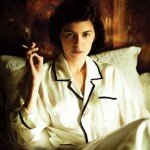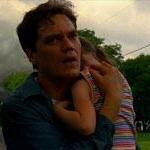Dutch-born French film director Jan Kounen has come a long way from filming music clips for synth-pop act Erasure. Touring his film Coco Chanel & Igor Stravinsky as part of the 21st Alliance Francaise French Film Festival, he talked to Cut Print Review about the fashion empress, anti-romance and comics.
CPR: What inspired you to make a film about Chanel?
Jan: Actually it was simple; I was sent the script. I received it and I was very curious because I didn’t know that Igor Stravinsky and Coco Chanel had an affair. I read the script and it was a typical movie, but an anti-romantic love story between two big icons which are talented and have strong personalities. So I loved the idea of the 1920s, the time Stravinsky wrote The Rite of Spring, also the relation between two artists. It wasn’t really for the desire of making a film about Chanel, but it was about eight weeks of her life… and both characters and the fact they are together gives me the desire to find out more.
CPR: It’s only based on eight weeks?
Jan: Well, we don’t know if there was a little more or less time, we don’t have too much detail on the affair, but we decided to set it up for approximately eight weeks. It’s not really a film for the audience to know about her whole life, it’s just for this time. One day in 1913 and one day in 1970 is all you see otherwise.
CPR: Did you know much on either Chanel or Stravinsky before filming?
Jan: Of course I knew of them, but I think I knew of the composer more than Chanel in detail. I was a big fan of The Rite of Spring, fascinated by this piece of music. When I started the film I researched on the characters and there’s plenty of information for that.

CPR: Your film came out just after Anne Fontaine’s Coco Avant Chanel. Did that bother you, or did you see the films as complimenting one another?
Jan: There are two things. First, of course it’s a problem because there’s a rule in cinema that when there is a film on a subject people will go to see the film on the subject, and when a second comes a few months later they don’t go to see the same film or story by another director. Releasing ours second, we lose a lot of the audience because they’ve gone to see the first one. Now, having said that they should not think they’ve seen this film because it’s actually not the same. The first film stops when our film starts and it’s very different. You can see both, that’s the main thing. You could even call my film a sequel. Now, I think in a way both of us, (director) Anne Fontaine and me, suffered from that. She rushed and won the race to be first, but she suffered, and we went to Cannes while she went to the cinemas. The thing that’s interesting is that after all the difficulties that we had because we lost box office and it was difficult for the producer, we can still see the story with the competition as something good.
There was also the Global Financial Crisis (GFC) in September in 2008. Because we had to rush into production (because there was the competition of the other film), when the GFC happened, we were on the shoot. So you can’t stop a film you’ve started. If we had no competition, we would have had more time and shot the film months later. Then it would not have been done. Our film is a fragile film compared to the other. We don’t have a big star like Audrey Tautou, we don’t have the same budget and a big studio like Fox behind us, and we’re making more of an ‘arty’ film if I can say that, for a more limited audience. The GFC would’ve killed it and I wouldn’t be speaking to you if the race didn’t push us to shoot, I’m sure of that.
CPR: Closing night at Cannes though… that would’ve been pretty amazing!
Jan: It was (nods, almost speechless)… It was very stressful and intense. Rushing to finish the film, I’d only completed it a few days before. You go from being alone in a screening room checking the last detail, to getting into a plane for Cannes and the next time you see the film is in the middle of two thousand people of the profession. Normally you have time to prepare… it was very intense but good.
CPR: Do you think Chanel strived to be so perfect in her working life because she couldn’t get love right? How did you see it?
Jan: I think that with personality, a certain direction will lead you to be positive and successful, but on another territory less so, and I think that the interesting part of Chanel and why I love her character is that she is a woman of today – running her own business, sponsoring art, wanting to be absolutely free from anyone, essentially from men. She’s a feminine feminist. Imagine this woman in the 1920s and the male mentality. They would be deadly scared – fascinated and scared. So I think it was difficult for her because of that, but also because she was very hard on herself. That’s what I like about her. But she was hard on everybody, and generous to some of course (the people she worked with). She may seem unlikable here, but when she applies it on herself you see the truth. When Igor Stravinsky doesn’t present the high of love that she imagined, then he’s out. It (the film) is not an example of how to perfect love, but knowing when to close the door – or open it. That’s shown in the character of Stravinsky in one particular scene (which we won’t reveal here). It’s the anti-manual for successful love!
CPR: What did you learn about Chanel that struck you the most?
Jan: The artistic quality of what she’s done (clothes, perfume). Her creation was a talent, but her generosity was a vision of society, of a woman’s place. Her vision was super smart. She created marketing – we don’t know that for sure, but doing what she did, saying ‘I am what I am’ and having a clear conception regarding her business, she had a clear and modern vision. Stravinsky on the other hand was interesting too. The Rite of Spring was seen as too abstract for audiences at the time. Today it’s too aggressive, too weird for audiences! But he’s seen as important throughout the 20th century because his work’s been copied or used as inspiration. Hitchcock used a similar score in many films; George Lucas had a very similar piece as a theme in Star Wars. We don’t know how much he influenced, but he was there. He was just into the music – and the opposite of Chanel in a way. There wasn’t a vision with him, just the music.
CPR: There’s a scene post-credits that brings a subtle change in perspective. Are you always trying to make audiences think?
Jan: I like to leave a lot of mystery. In the film, there are many areas where people have a different interpretation of the one scene. I think that they should have their own understanding, and I shouldn’t make it completely clear. There is no other way. I think it’s interesting to leave a lot of room to move around. Interpretation is a realm that should be left open; for me, Anna (Mouglalis, who plays Chanel) and the audience.

CPR: What was it like working with Anna and Mads Mikkelsen?
Jan: Oh it was great. Mads is an actor I loved working with, one of the best working relationships I’ve had on set with an actor. He’s a brilliant worker. He had to learn Russian, French, piano… all in two months. He has a strong personality. Anna too, she’s a hard worker and always has a strong point of view. A bit like Coco Chanel. So the result was great. She’ll come to direct one day; she had strong ideas on how scenes could go, and it was a very creative process.
CPR: What got you into the creative process of filmmaking?
Jan: I love storytelling, but before film I wanted to be a comic book artist. At art school I was eventually pushed to make films, and I discovered it was a very powerful way to tell stories… It’s difficult to become a filmmaker though, into features. I did a lot of short films and commercials – fifteen years ago I was here for a commercial (his last visit to Australia).
I’ve done a comic book adaptation (Blueberry, 2004)… I don’t think I would do it again. I love comic books, but the problem is people want to see the comic book live. I prefer to go with a novel where you create the vision. Blueberry was a creation based on the comic and I went far away from the agreement with the author. And people were disappointed, those who knew the comic book, because it was so different. Unless there’s a comic book done in such a way that the adaptation could be interesting I’m not interested now.
CPR: You practice Shamanism – how does that influence you in making a film?
Jan: The 10 years (in being active) has taught me to release a lot of fears. Sometimes you have to spend time exploring fears so when someone proposes a film that’s completely different to what you’ve explored, like Chanel & Stravinsky, you have none. That opens more possible experiences for you in cinema; it opens you up in life and in art. You can give back your experience in film too – the opening credits of Chanel & Stravinsky is dedicated to that. I also used similar ideas in Blueberry.
CPR: Is there anything else you’d like to add?
Jan: Stay until the end of the credits. And it’s a film to be perceived. Let’s open up the realms of sound and story!
Coco Chanel & Igor Stravinsky opens in Australia on April 15.
 Follow the author Katina Vangopoulos on Twitter.
Follow the author Katina Vangopoulos on Twitter.


 Competition: Win ‘Coco Chanel and Igor Stravinsky’ tickets + DVD pack!
Competition: Win ‘Coco Chanel and Igor Stravinsky’ tickets + DVD pack!












